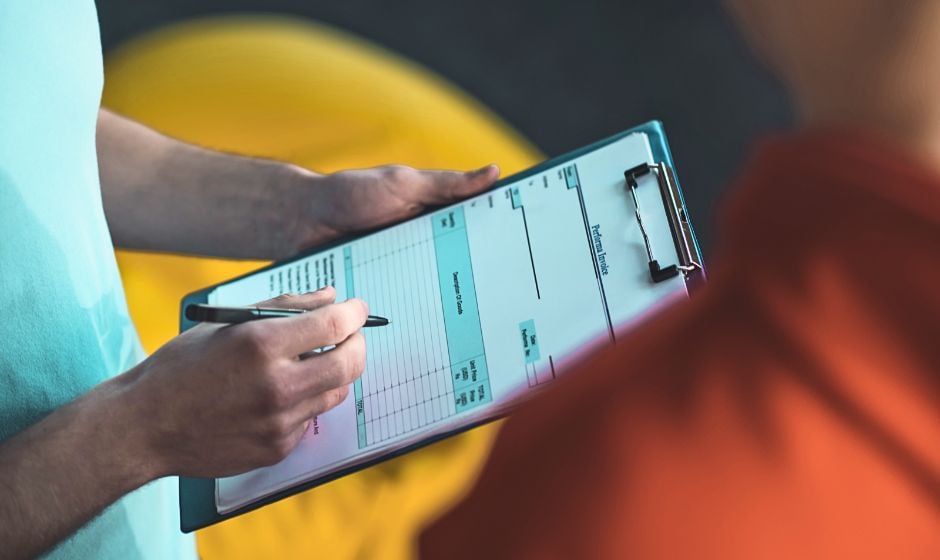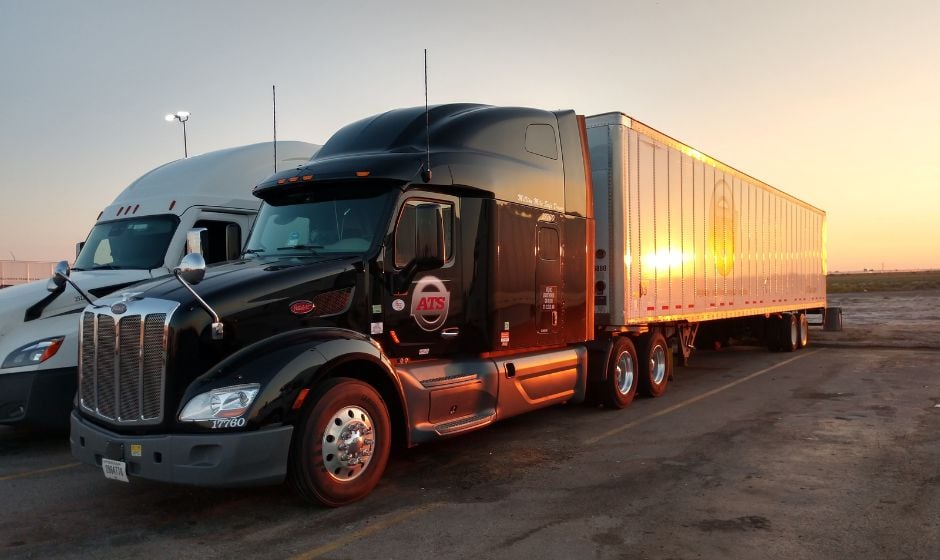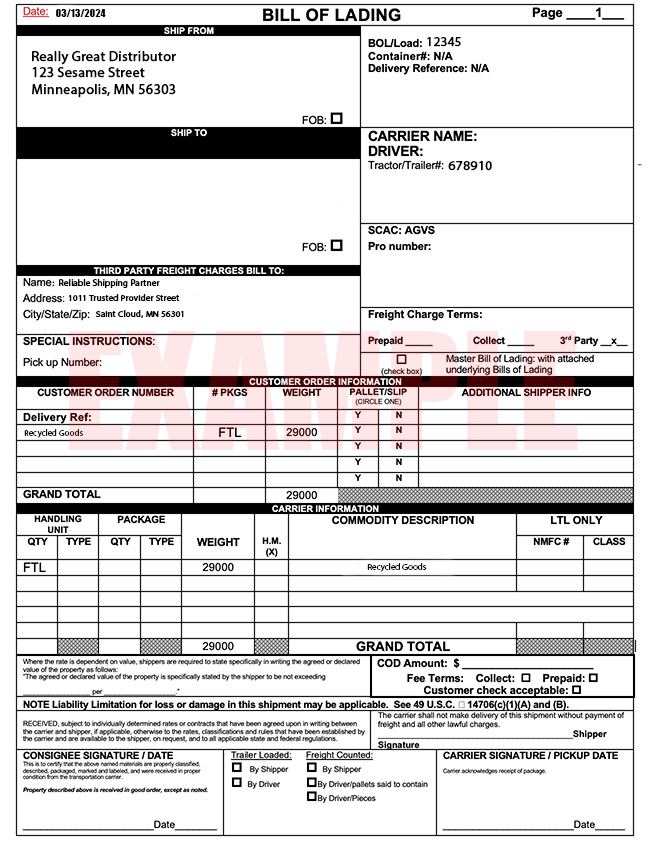
Just like Bon Jovi, blind shipping is misunderstood.
At Anderson Trucking Service (ATS), we’ve seen and heard it all when it comes to blind shipping.
“Hey, this load doesn’t have a delivery address; where am I supposed to drop off?”
“Did you mean to send that BOL without consignee information?”
“Is this even legal?”
You name it, we’ve answered it. We’ve become so familiar with the most common questions about blind shipping, it inspired us to put the answers all in one place — here!
In this article, we’ll address all your most pressing questions about blind shipping: What is blind shipping? Why would a business choose to ship blind? How does a transportation provider handle a blind shipment?
Along the way, we’ll share our industry expertise on the benefits of blind shipping, the cost of blind shipping, and how shippers like you can help ensure total blind shipping success.
- What is a blind shipment?
- Why ship freight blind?
- Are blind shipments legal?
- Do blind shipments cost more?
- What industries use blind shipments?
- How does a carrier or brokerage handle a blind shipment?
- How can shippers ensure successful blind shipments?
What is a Blind Shipment?
A blind shipment describes a practice used when a shipper does not want a consignee to have access to information that identifies their supplier. Blind shipments can also conceal when a good is shipping from a third-party vendor rather than the distributor.
When shippers need goods shipped directly from the producer to the customer, but do not want the customer to know who the producer is or where they are located, they’ll request a blind shipment.
To create the blind shipment, the carrier will create a bill of lading (BOL) that is separate from the original purchase order. Blind BOLs conceal the name and address of the shipper or consignee. This allows the carrier to issue a BOL without disclosing where the shipment is coming from.

In some cases, both the shipper and the consignee want their information concealed from the other. This is called a "double-blind" shipment.
Why Ship Freight Blind?
Very simply, blind shipping protects shippers’ businesses. But how?
Let’s say you’re jonesing for a 3 p.m. pick-me-up. Your coworker swings by your desk with an enticing offer: A fresh, hot coffee for just $5.
If you’ve only ever gotten your coffee fix through your coworker, you might take them up on that deal.
But if you know your office provides unlimited coffee each day for free, you’re more likely to cut your coworker out of your personal supply chain.
This is the scenario distributors and drop-shippers strive to avoid with blind shipping. Blind shipping prevents customers from doing business directly with a distributor’s supplier and vice versa.
Are Blind Shipments Legal?
Yes — not only is blind shipping legal, it’s quite common.
There is also no volume limit on blind shipping. This is another reason blind shipping is popular with drop-shippers and bulk distributors.
But this doesn’t mean blind shipments are totally without restrictions.
Some carriers have their own rules for blind shipments to ensure they bill correctly, and to prevent identifying information from slipping through the cracks.
These restrictions may include:
- Accepting false names, addresses, and phone numbers of businesses, but requiring the city and zip code to match that of the actual sending or receiving business
- Enforcing specific delivery instructions, such as requiring the shipment to be accepted only by certain pre-approved personnel
- Requiring payment up front, when booking the load
Blind shipping policies are unique to each carrier, so it’s important to ask about any relevant restrictions before initiating a blind shipment.
Do Blind Shipments Cost More?
Yes, though the exact amount will vary from provider to provider. A good rule of thumb is to budget for a blind shipment accessorial charge of $100-$200 per shipment.
This fee covers the extra time, effort, care, and attention blind shipments require on the part of the carrier.
Related: The Best Way to Avoid Accessorial Charges in the Trucking Industry

What Industries Use Blind Shipments?
A wide variety of wholesalers, retailers and drop-shippers across industries use blind shipping to protect the identity of their suppliers.
Blind shipping is often used in/for:
- Automotive parts
- Beauty and cosmetics
- Construction
- E-commerce
- Electronics and technology
- Fashion and apparel
- Food and beverage
- Home and garden
- Office supplies
- Pharmaceuticals and healthcare
- Print and media
- Print-on-demand and custom products
- Private label brands
- Promotional products
- Recycling
- Sports and recreation
How Does a Carrier or Brokerage Handle a Blind Shipment?
When a carrier or brokerage receives a request for a blind shipment, they’ll begin creating the required BOLs.
For a standard blind shipment, two BOLs are created:
- A standard BOL containing the complete pick-up and delivery information for both parties, which allows the carrier and driver to accurately deliver the shipment
- A “blind” or “dummy” BOL, in which one of the parties’ information is left blank
The “blind party” in the exchange will receive the blind BOL. In double-blind shipments, both parties receive blind BOLs.

For operations managers and truck drivers who aren’t familiar with blind shipping, receiving a blind BOL can sometimes be a head-scratcher. They may think there’s been a mistake, or that something shady is going on. Don’t worry — your carrier or brokerage can set their minds at ease by explaining blind shipping (or sending them this article!).
How Can Shippers Ensure Successful Blind Shipments?
As a shipper, it’s important to keep in mind that blind shipping is more complex for your carrier than the average load.
If the wrong BOL is used, your freight could be delivered to the wrong destination, or the blind party could be handed the very information you wanted to keep private.
When anonymity is paramount and multiple BOLs are in play, shippers can increase the likelihood of their blind shipments’ success through clear, consistent communication.
Here are our top three tips for ensuring your supplier information stays as secret as the contents of Area 51:
- Only share private supplier and consignee information with necessary parties to reduce risk.
- Confirm with your carrier that it has the complete pick-up and delivery information for its records.
- Confirm that the driver knows which BOL to present to each party.
While it’s difficult to prevent simple human error with 100 percent certainty, proactive communication practices can help reduce the likelihood of accidental slip-ups.
Related: How to Get Started Managing a Transportation Supply Chain

Need to Ship Blind? Do This Next
Now that you have a better understanding of what blind shipping is and the purpose it serves in protecting a business’s interests, you may find yourself asking, “Hold on . . . should I be shipping blind?”
Well, if you need to get freight to a customer while keeping its origins on the down-low, blind shipping could be the answer.
Blind shipping is a straightforward, legal, and cost-effective method of keeping supply chain details confidential. This allows wholesalers, drop-shippers, and other distributors to meet customer needs with flexibility and speed — and without risking their place in the supply chain.
If blind shipping sounds right for you, it’s time to start looking for a carrier. Our goal is to make it easy for you to become the supplier that always delivers, which is why we created this Freight Carrier Selection Checklist.
We designed this free downloadable guide to provide a simple framework for vetting freight carriers. Use it to assess prospective partners and find the best fit for your needs!
If you have additional questions or would like to request a quote, just reach out to ATS. We’ll be happy to answer any questions you have about this shipping topic or any other.

